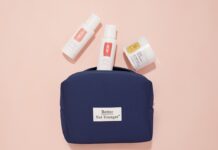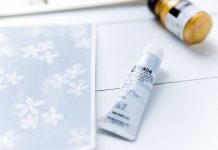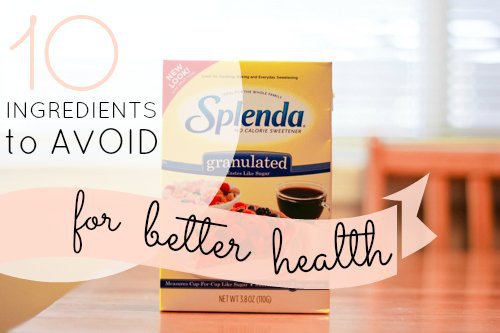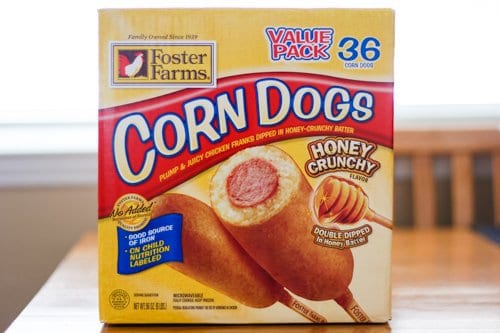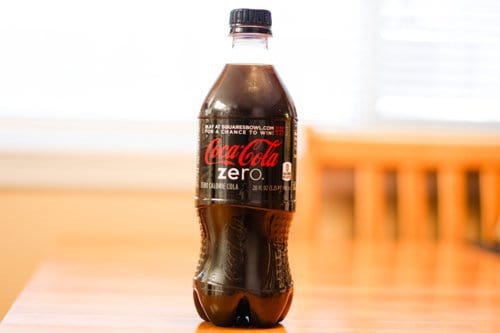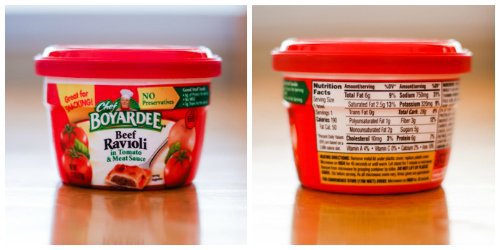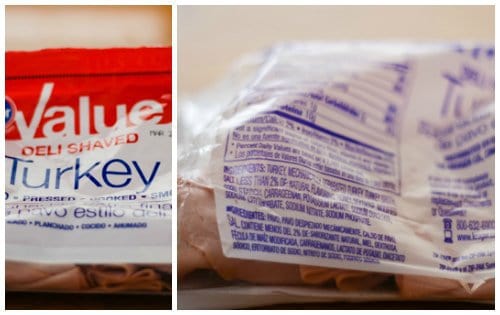Photo Credit: The Memoirs of Megan
When you begin the habit of looking at the ingredients list of foods before purchasing, it’s easy to feel like you have no idea what you are looking at or what you’re looking for. Of course, the first rule of thumb is a short and pronounceable ingredient list. But what if you would really like to purchase an item that seems fairly processed but would like to make sure it doesn’t contain anything really bad? And why are these things bad?
Having a short list of some of the worst ingredients in your head is helpful. After a while, these ingredients will become familiar to you as you recognize them in almost ALL processed foods and drinks. Scan the label quickly for your “no-no” ingredients, and move on. It’s as simple as that. You see one of these on the list and you just don’t eat it.
1.) Artificial Sweeteners
Aspartame (Equal, NutraSweet)
Sucralose (Splenda)
Acesulfame potassium (Sunett, Sweet One)
Neotame
Saccharin (Sugar Twin, Sweet’N Low)
WHAT
Chemically created, no-calorie sweeteners.
WHY
When eaten with frequency, these super sweeteners cause our sugar receptors to become overstimulated. When that happens, we will crave more unnaturally sweet foods and won’t enjoy the taste of natural flavors of fruit and vegetables. It becomes a vicious cycle of sugar craving.
Photo Credit: The Memoirs of Megan
2.) Natural and Artificial Flavors
WHAT
Although it appears as one ingredient, artificial or natural flavors are a complex mix of chemicals. Even “natural flavors” are transformed from natural origins into a chemical mix to create a flavor.
WHY
The fact that artificial strawberry flavoring contains 49 ingredients should be fairly convincing. Aside from that, and wanting to avoid eating unknown chemicals, if a food contains these chemicals, then it should be a red flag to you that it is altered and processed enough to not be natural and healthy. If it’s augmented with chemicals to give it flavor, you don’t need to eat it.
3.) Food Coloring
Especially blue 1 and 2, green 3, red 3, yellow 6
WHAT
Food dyes are chemicals that are added to give color to food, enhance the color or even regulate the color so it’s consistent between batches.
WHY
Although still approved by the FDA, food dyes are continually being pointed at as a possible cause of ADHD in children. It isn’t worth the risk.
Photo Credit: The Memoirs of Megan
4.) HFCS, Corn Syrup
WHAT
Used as an added sweetener, High Fructose Corn Syrup is a mixture of glucose and fructose (both forms of sugar). Why do they use HFCS instead of sugar if it is inherently sugar? It’s sweeter, and it’s cheaper.
WHY
In small amounts, there is not commonly accepted evidence that HFCS is harmful. What IS harmful is that it is added to so many foods and drinks that you could easily end up eating way more sugar than is healthy. This sweetener overload can lead to many weight related health issues, including type 2 diabetes and heart disease.
Photo Credit: The Memoirs of Megan
5.) Autolyzed Yeast Extract, Yeast Extract
WHAT
When yeast enzymes are broken down, the result of the usable substance is referred to as autolyzed yeast extract. It contains free glutamic acid or MSG, and is less expensive than MSG. It is used to add salty flavor to foods.
WHY
Opponents of autolyzed yeast extract say that using the ingredient is no less harmful than using MSG. Although even MSG is “generally recognized as safe” by the FDA, it continues to be a controversial ingredient due to a small percentage of people experiencing a list of uncomfortable side effects.
6.) Benzoate Preservatives
BHA, BHT, TBHQ
WHAT
These preservatives are added to food to prevent it from molding. Sodium Benzoate is also used in fireworks to create that great whistling noise when compressed and ignited.
WHY
When combined with ascorbic acid (vitamin C), sodium benzoate and potassium benzoate form a known carcinogen called benzene. Some people may have trouble metabolizing BHA and BHT which can result in health problems and behavioral changes. There have been no clinical studies to confirm the anecdotal evidence, but it has been thought that TBHQ may cause anxiety and aggravate ADHD in some children.
7.) Brominated Vegetable Oil (BVO)
WHAT
Vegetable Oil that has bromine atoms bonded to it. Bromine itself is corrosive and toxic. BVO is used to help citrus oils remain suspended in liquids, such as soft drinks.
WHY
It is not approved for use in the EU, India or Japan. Because it is included in beverages that people tend to consume freely and in high quantities, these people can suffer severe side effects from the bromine.
8.) Bleached Flour
WHAT
It is “all-purpose” flour that is bleached bright white with the use of chlorine gas or benzoyl peroxide (also used to treat acne) instead of allowing the flour to naturally lighten in the oxidation process (which takes over a month).
WHY
The use of Benzoyl Peroxide as a food additive has been banned in the EU, Canada and China due to health concerns. It is also another “money saving” process similar to using HFCS, that doesn’t add anything nutritionally to the food.
Photo Credit: Cookies for Breakfast
9.) Partially Hydrogenated Oils
WHAT
These are oils put through a chemical process to turn liquid fat into solid. These oils contain trans fats.
WHY
Trans fats raise the bad cholesterol in your body and lower the good cholesterol. Although many foods are now listing that they are “trans fat free” it does not mean that they are 100% free of them. They are allowed to have 0.5g or less of trans fat per serving to be considered trans fat free. If multiple servings are eaten, you have certainly eaten trans fats.
Photo Credit: The Memoirs of Megan
10.) Sodium Nitrates/Nitrites
WHAT
A preservative that is added to processed meats. Think hot dogs, bacon, pepperoni.
WHY
Nitrates are thought to lead to heart disease through blood vessel damage and hardened arteries, along with changing the way your body uses sugar – increasing your risk of diabetes.
Not all the ingredients on this list will make you sick and unhealthy if you have some of them in small amounts. Try to give yourself the 80/20 rule of clean eating, so that once in a while if you want to be carefree and eat “junk” you can feel better knowing that your body isn’t already on overload with chemical ingredients.
This post is meant for educational purposes only. It is not intended to replace medical advice from your physician, doctor or health care professional. Please read our terms of use for more information.







